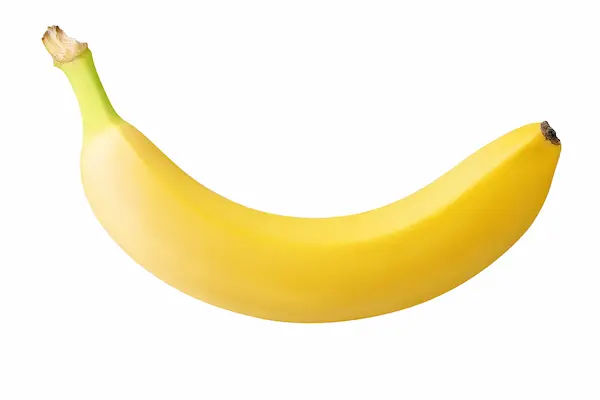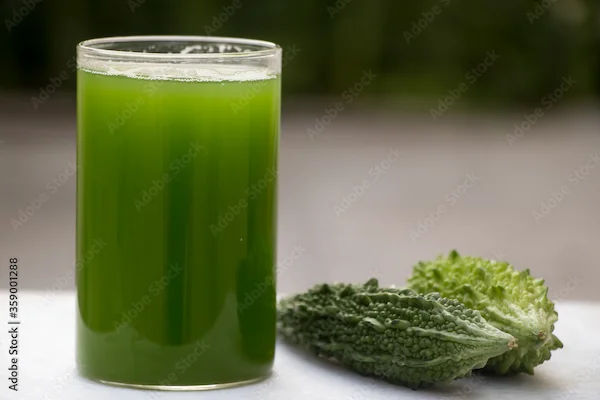Bajra (Pearl Millet) Nutritional Benefits and Healthy Recipes
Discover bajra benefits. This millet is a tasty, gluten-free grain. Get science-backed nutrition tips plus easy recipes for rotis, khichdi and porridge.

Written by Dr. Md Yusuf Shareef
Reviewed by Dr. Dhankecha Mayank Dineshbhai MBBS
Last updated on 12th Nov, 2025
%20Nutritional%20Benefits%20and%20Healthy%20Recipes.webp?tr=q-80,f-webp,w-350,dpr-2,c-at_max 700w)
Introduction
If you’re exploring millets and gluten-free grains, you’ll love the many bajra benefits. Also known as pearl millet, bajra is a traditional whole grain enjoyed across parts of Asia and Africa. Today, it’s making a comeback for good reasons: it’s hearty, budget-friendly, naturally gluten-free, and can be part of a balanced diet that supports heart, gut, and metabolic health. Below you’ll find clear, evidence-informed guidance on nutrition, safe use, and easy recipes to help you add bajra to your meals.
What Is Bajra (Pearl Millet)?
Bajra (Pennisetum glaucum) is one of the most widely grown millets. It’s a small, round whole grain with a pleasant, slightly nutty taste. You can buy it as whole grain (like tiny beads), cracked grain (similar to daliya), or flour (atta) for flatbreads and pancakes.
• Naturally gluten-free: Millet is one of several gluten-free grains, which makes bajra a helpful option for people with celiac disease or gluten sensitivity when prepared without cross-contamination.
• Versatile: Cook it like rice or quinoa, grind it into flour for rotis, or simmer it into comforting porridge.
• Budget- and planet-friendly: It’s traditionally grown in semi-arid regions and is known for hardiness, making it a practical staple in many communities.
Bajra benefits: Why this millet deserves a place on your plate?
Whole grains are linked with broad health benefits, and bajra can help you meet those whole-grain goals.
• Heart-friendly pattern: Diets rich in whole grains and fiber are associated with a lower risk of cardiovascular disease. Bajra contributes fiber and minerals like magnesium that support heart health as part of an overall healthy eating pattern.
• Digestive support: The fiber in whole grains helps promote regularity and supports a healthy gut microbiome. Simple step: pair bajra with vegetables and legumes to boost fiber even further.
• Steadier energy: Choosing intact or minimally processed whole grains can support more stable energy compared with refined grains. For balanced blood sugar, combine bajra with protein, healthy fats, and non-starchy vegetables.
• Nutrient-dense: Bajra provides plant protein, dietary fiber, and minerals such as iron and magnesium, plus B vitamins. Cooking methods and pairings (see tips below) help you absorb more of these nutrients.
• Naturally gluten-free: Millet is naturally free of gluten, making bajra a helpful addition to gluten-free eating when prepared in a dedicated, uncontaminated kitchen.
How does bajra compare with other millets?
• All millets are whole grains, but they differ slightly in taste and texture:
• Pearl millet (bajra): robust, earthy flavor; great for rotis, khichdi, porridge.
• Foxtail/little/barnyard millets: often quicker-cooking; mild taste; good for upma or bowls.
• Sorghum (jowar): technically a cereal grain often grouped with millets; makes soft rotis and porridges.
No single grain is “best.” Rotate different millets and other whole grains for variety and a broader nutrient mix.
Consult a Top Ayurveda Specialist for Personalised Advice
Buying, Storing, and Cooking Bajra
Buying
• Whole grain vs. flour: Whole bajra and cracked grain keep longer. Bajra flour is great for rotis and pancakes but turns rancid faster.
• For gluten-free needs: If you have celiac disease, look for products labeled gluten-free to reduce cross-contamination risk.
• Check freshness: Choose products with recent milling/pack dates and intact, dry kernels.
Storing
• Whole grain: Store in an airtight container in a cool, dark place for up to several months.
• Flour: Keep tightly sealed in the refrigerator or freezer to preserve freshness.
Cooking basics (stovetop)
• Rinse: Rinse the whole bajra under running water.
• Optional soak: Soaking 4–8 hours can shorten cooking time and may improve texture.
• Simmer: Use roughly 1 cup bajra to 2.5 -- 3 cups water or broth. Bring to a boil, then simmer covered until tender and most liquid is absorbed. Fluff and rest 5 minutes.
• Pressure cooker/Instant Pot: Also works well; cooking time is typically shorter for soaked grains.
Healthy Bajra Recipes (Gluten-Free)
1) Bajra Roti (Pearl Millet Flatbread)
A simple, nourishing flatbread that pairs with dals, curries, or yogurt.
Ingredients (makes 6–8 small rotis)
• 2 cups bajra flour
• About 1 cup warm water (add as needed)
• Pinch of salt (optional)
• 1–2 teaspoons ghee or oil for cooking (optional)
Steps
1. In a bowl, mix flour and salt. Add warm water gradually and knead to a soft, pliable dough.
2. Divide into small balls. Dust with flour. Pat between your palms or roll gently between parchment to avoid cracking.
3. Heat a tawa/skillet over medium heat. Cook each roti 30–60 seconds per side, pressing gently with a cloth or spatula. Add a few drops of ghee or oil if you like.
4. Keep covered in a cloth to stay soft. Serve warm.
2) Comforting Bajra Khichdi (Pearl Millet + Moong Dal)
Wholesome one-pot meal with fiber, protein, and vegetables.
Ingredients (serves 3–4)
• 1/2 cup whole or cracked bajra (rinsed; soak if possible)
• 1/2 cup split yellow moong dal (rinsed)
• 1–1.5 cups mixed vegetables (e.g., carrots, peas, spinach)
• 1 small onion, chopped (optional)
• 1–2 teaspoons grated ginger
• 1–2 tablespoons ghee or oil
• 1/2 teaspoon cumin seeds, 1/4 teaspoon turmeric
• Salt to taste, pepper/chili to taste
• 4–5 cups water or low-sodium stock
• Fresh cilantro and lemon to finish
Steps
1. In a pot or pressure cooker, warm ghee/oil. Sizzle cumin, add onion and ginger; sauté 2–3 minutes.
2. Stir in turmeric, bajra, and moong dal; sauté 1 minute.
3. Add vegetables, water/stock, and salt. Cook covered until grains are soft and creamy (pressure cooker: a few whistles; stovetop: simmer until tender). Adjust water for your preferred consistency.
4. Finish with cilantro and a squeeze of lemon.
3) Creamy Bajra Breakfast Porridge
A cozy alternative to oatmeal with long-lasting energy.
Ingredients (serves 2)
• 1 cup cooked bajra (make ahead) or 1/2 cup uncooked bajra
• 1.5–2 cups milk or fortified plant milk
• 1/2 teaspoon cinnamon or cardamom
• 1–2 teaspoons honey or maple syrup (optional)
• Toppings: sliced banana or berries, chopped nuts/seeds, peanut or almond butter
Steps
1. If using uncooked bajra, simmer with milk and a little water until tender.
2. Stir in spices and sweetener if using.
3. Top with fruit and nuts/seeds. For extra protein, swirl in nut butter or serve with yogurt.
4) Pearl Millet Veggie Pilaf (Pulao)
A colorful, fiber-rich side or main.
Ingredients (serves 3–4)
• 1 cup soaked whole bajra (drained)
• 1 tablespoon oil or ghee
• 1 small onion, sliced
• 1 cup mixed vegetables (bell peppers, peas, carrots)
• 1 clove garlic, minced
• 1/2 teaspoon cumin seeds, 1 bay leaf
• 2.5–3 cups water or low-sodium broth
• Salt and pepper to taste
• Fresh herbs or lemon to finish
Steps
1. Heat oil, add cumin and bay leaf. Sauté onion and garlic until fragrant.
2. Add vegetables, then bajra; stir for 1 minute.
3. Pour in water/broth, season, and bring to a boil. Cover and simmer until tender and liquid is absorbed.
4. Fluff, rest, and finish with herbs and lemon.
Smart Tips to Get More from Millets
• Pair with protein: Combine bajra with lentils, beans, yogurt, eggs, tofu, or lean meats for balanced meals that support satiety and blood sugar control.
• Boost iron absorption: Eat bajra with vitamin C–rich foods (lemon, tomatoes, bell peppers, citrus) to help your body absorb plant-based iron.
• Mix your grains: Rotate bajra with other millets and whole grains like brown rice, oats, or quinoa for variety.
• Watch portions: Whole grains are nutritious but still provide carbohydrates. Adjust serving sizes based on your energy needs and health goals.
• Mind cross-contamination: For a strict gluten-free diet, prepare bajra in a clean area with dedicated utensils to avoid gluten exposure.
Who Might Need Extra Guidance?
• Celiac disease or gluten sensitivity: Bajra is one of several gluten-free grains, but use products labeled gluten-free and avoid cross-contact during cooking.
• Diabetes or prediabetes: Whole grains can fit into a blood sugar–friendly eating plan. Monitor portions, pair with protein and non-starchy vegetables, and check your personal glucose response.
• Kidney disease or other medical conditions: If you have conditions that require mineral or fiber modification, consult your clinician or a registered dietitian for tailored advice.
Consult a Top Ayurveda Specialist for Personalised Advice
Consult a Top Ayurveda Specialist for Personalised Advice

Dr. Pepsy Jose
Panchakarma Practitioner
14 Years • BAMS, MD Ayurveda (Panchakarma)
Bengaluru
AYURRHYTHM HOLISTIC CLINIC AND PANCHAKARMA THERAPY, Bengaluru

Dr. Shiv Prakash Singh
Ayurveda Practitioner
19 Years • BAMS
Kolkata
Vedhive Ayurveda College Street, Kolkata

Dr. Rik Sadhukhan
Ayurveda Practitioner
8 Years • BAMS
Kolkata
Vedhive Ayurveda, Ballygunge, Kolkata

Dr. Anjan Das
Ayurveda Practitioner
8 Years • Ayurvedacharya ( B.A.M.S )
Dumdum
Vedhive Ayurveda Clinic, Dumdum
Consult a Top Ayurveda Specialist for Personalised Advice

Dr. Pepsy Jose
Panchakarma Practitioner
14 Years • BAMS, MD Ayurveda (Panchakarma)
Bengaluru
AYURRHYTHM HOLISTIC CLINIC AND PANCHAKARMA THERAPY, Bengaluru

Dr. Shiv Prakash Singh
Ayurveda Practitioner
19 Years • BAMS
Kolkata
Vedhive Ayurveda College Street, Kolkata

Dr. Rik Sadhukhan
Ayurveda Practitioner
8 Years • BAMS
Kolkata
Vedhive Ayurveda, Ballygunge, Kolkata

Dr. Anjan Das
Ayurveda Practitioner
8 Years • Ayurvedacharya ( B.A.M.S )
Dumdum
Vedhive Ayurveda Clinic, Dumdum
More articles from General Medical Consultation
Frequently Asked Questions
1) Is bajra gluten-free?
Yes. Millet is naturally gluten-free, and bajra (pearl millet) can be a good choice for people avoiding gluten. If you have celiac disease, choose certified gluten-free products and prevent cross-contact in the kitchen.
2) What are the top bajra benefits for health?
Bajra contributes fiber, plant protein, and minerals like magnesium and iron. Including whole grains such as millets is linked with improved heart health, better digestive health, and helpful support for blood sugar management when part of a balanced diet.
Is bajra good for diabetes?
It can be. Whole grains, fiber, and balanced meals help with blood sugar control. Pair bajra with protein (e.g., lentils, yogurt), healthy fats (e.g., nuts), and vegetables, and watch portions. Individual responses vary, so check your readings and work with your healthcare team.
4) Can I eat bajra every day?
You can include bajra regularly as part of a varied diet that emphasizes whole grains, vegetables, fruits, legumes, nuts/seeds, and healthy proteins. Rotating different whole grains offers a wider range of nutrients and flavors.
5) How do I cook bajra without a pressure cooker?
Rinse (and optionally soak) the grains. Simmer 1 cup bajra in about 2.5–3 cups water or broth until tender, then rest and fluff. Soaking reduces cooking time; adjust water for softer or firmer texture.




